Discover Delhi: A Journey Through Time
Join us on a captivating exploration of Delhi's rich history and vibrant culture in this immersive free walking tour.
Time
3 Hours
Stops
9 Places
Distance
9.8 km
India Gate
Start your journey at the iconic India Gate, a war memorial dedicated to the soldiers of the Indian Army who died during World War I.
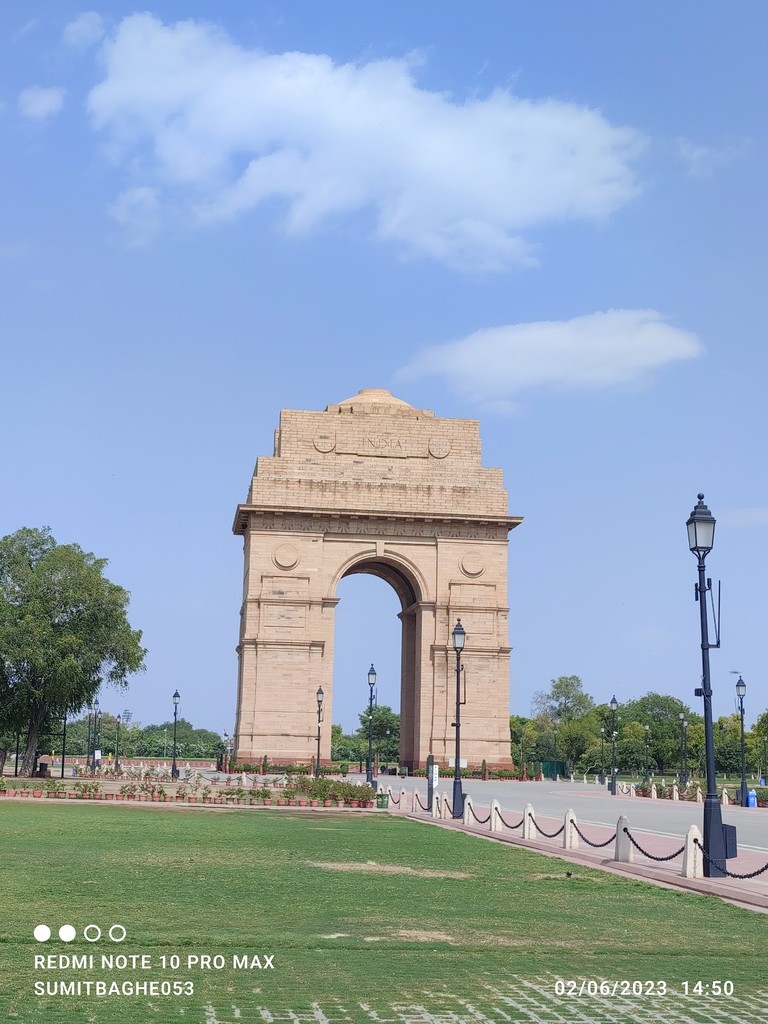
India Gate (Source: Google Maps)
India Gate is an iconic war memorial located in the heart of New Delhi. Designed by Sir Edwin Lutyens, it commemorates the 82,000 soldiers of the Indian Army who died in World War I. The structure stands 42 meters tall and is made of red sandstone and granite, featuring a beautiful archway adorned with inscriptions of the names of the soldiers. The memorial is surrounded by lush lawns and is a popular gathering spot for locals and tourists alike, especially during the evenings when the area is beautifully lit. The eternal flame, known as the Amar Jawan Jyoti, burns at the base of the monument, honoring the soldiers who sacrificed their lives for the nation. The India Gate serves as a poignant reminder of India's rich military history and is a must-visit landmark for anyone exploring the capital.
National Gallery of Modern Art
Just a short walk from India Gate, this gallery houses a vast collection of modern and contemporary Indian art.
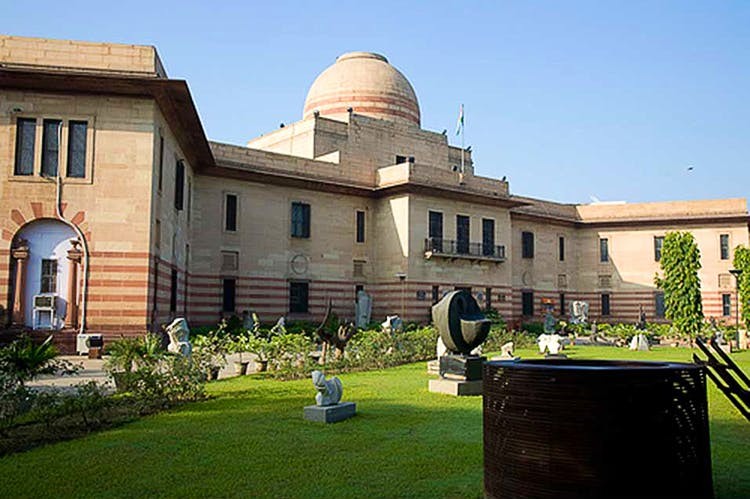
National Gallery of Modern Art (Source: Google Maps)
The National Gallery of Modern Art (NGMA) is a premier art gallery in Delhi, showcasing an extensive collection of modern and contemporary Indian art. Housed in a former royal palace, the NGMA was established in 1954 and features works from the 1850s to the present day, including paintings, sculptures, and photographs. The gallery aims to promote and preserve India's artistic heritage and hosts various exhibitions and cultural events throughout the year. Visitors can explore the diverse range of artworks, including pieces by renowned artists such as Rabindranath Tagore, Jamini Roy, and Amrita Sher-Gil. The NGMA is not only a hub for art enthusiasts but also offers educational programs and workshops, making it a vital part of Delhi's cultural landscape.
Rajpath
Walk along Rajpath, a ceremonial boulevard that connects India Gate to Rashtrapati Bhavan, offering a glimpse into India's political heart.
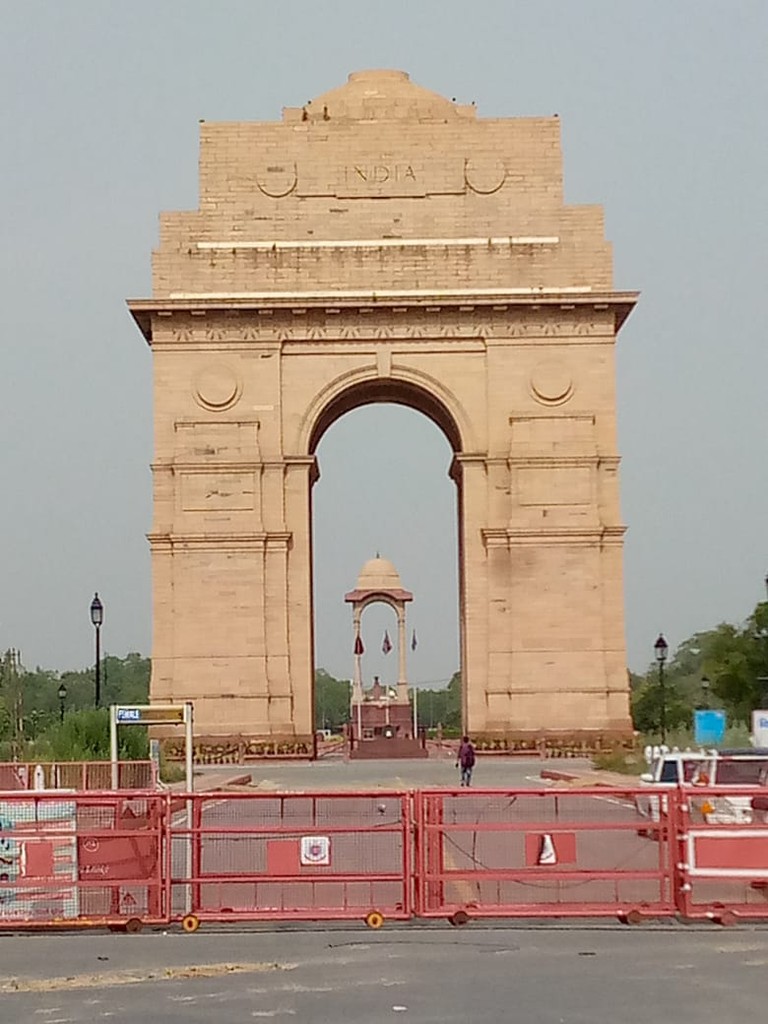
Rajpath (Source: Google Maps)
Rajpath, meaning 'King's Way', is a ceremonial boulevard in New Delhi that stretches from India Gate to Rashtrapati Bhavan. It is a significant site for national celebrations, parades, and events, including the Republic Day parade, where military and cultural displays showcase India's diversity and strength. The boulevard is lined with lush green lawns, fountains, and beautiful flower beds, creating a picturesque environment. Along Rajpath, visitors can admire the impressive architecture of various government buildings, including the North and South Blocks, which house important ministries. The area is also known for its spacious design and grand vistas, making it a popular spot for both locals and tourists to relax, stroll, and take photographs. Rajpath embodies the essence of India's political heart and its commitment to democracy.
Rashtrapati Bhavan (from outside)
Continue to the Rashtrapati Bhavan, the official residence of the President of India, showcasing impressive architecture and sprawling gardens.
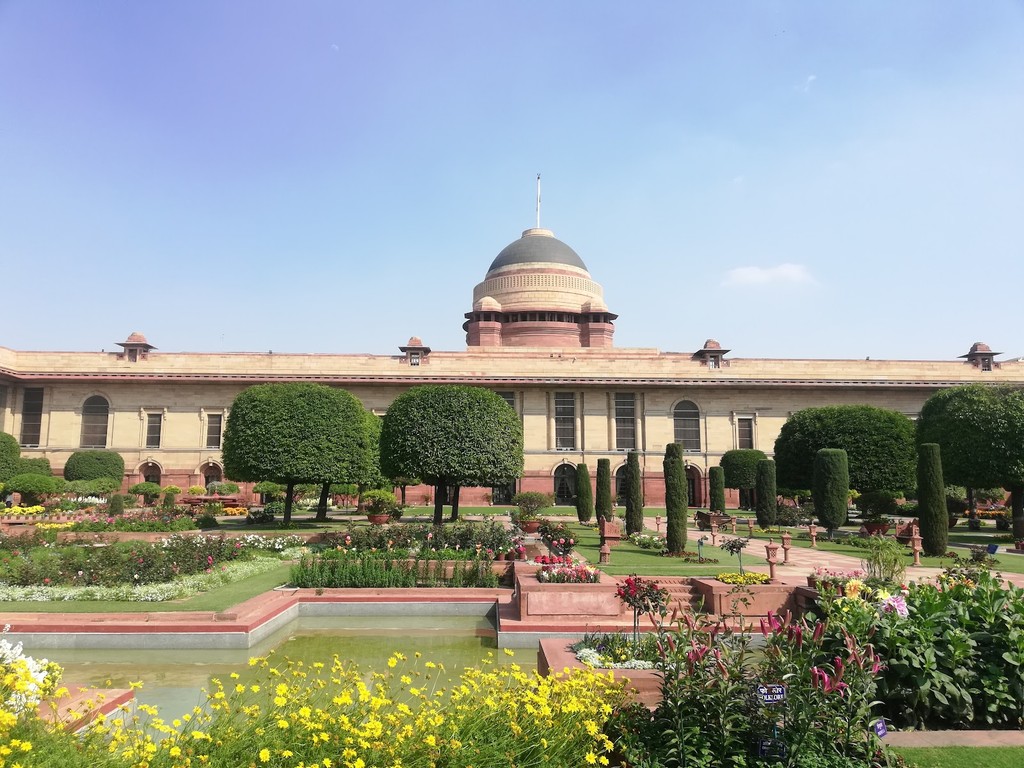
Rashtrapati Bhavan (from outside) (Source: Google Maps)
Rashtrapati Bhavan is the official residence of the President of India, located at the western end of Rajpath. This magnificent structure, designed by Sir Edwin Lutyens, serves as a symbol of the Indian Republic. Completed in 1929, it features a blend of Indian and Western architectural styles, with its impressive dome and grand columns. The sprawling gardens, known as the Mughal Gardens, are open to the public during certain months of the year, showcasing beautiful floral arrangements and tranquil water features. Rashtrapati Bhavan is not only an important government building but also a cultural landmark, hosting various events, ceremonies, and exhibitions. Its majestic presence and historical significance make it a key attraction for visitors to Delhi.
Parliament House (from outside)
Just a short walk away, admire the circular Parliament House, a symbol of India's democratic governance.
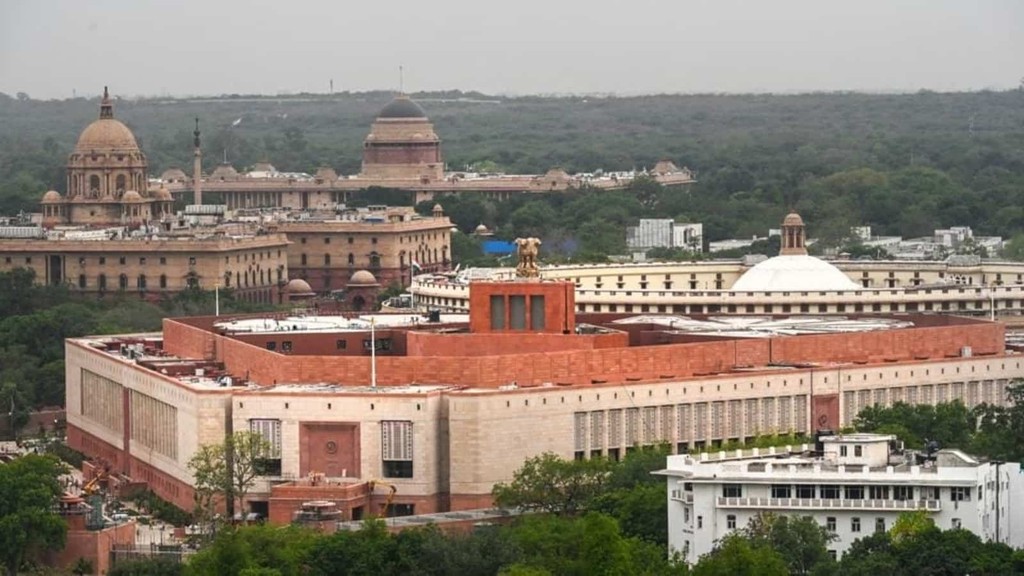
Parliament House (from outside) (Source: Google Maps)
Parliament House, known as Sansad Bhavan, is an architectural marvel and a symbol of India's democratic governance. Designed by Sir Edwin Lutyens and Herbert Baker, this circular structure was completed in 1927 and serves as the seat of the Parliament of India. The building is surrounded by lush gardens and features a distinctive dome, with 144 columns that represent the strength and unity of the nation. The Parliament House houses both the Lok Sabha (House of the People) and the Rajya Sabha (Council of States), making it a crucial center for legislative activities. Its unique design and grandeur reflect India's rich cultural heritage and commitment to democracy. Visitors often admire the building's architecture and significance, making it a notable landmark in the heart of New Delhi.
Agrasen ki Baoli
Discover Agrasen ki Baoli, an ancient stepwell that offers a serene escape amidst the bustling city with its unique architecture.
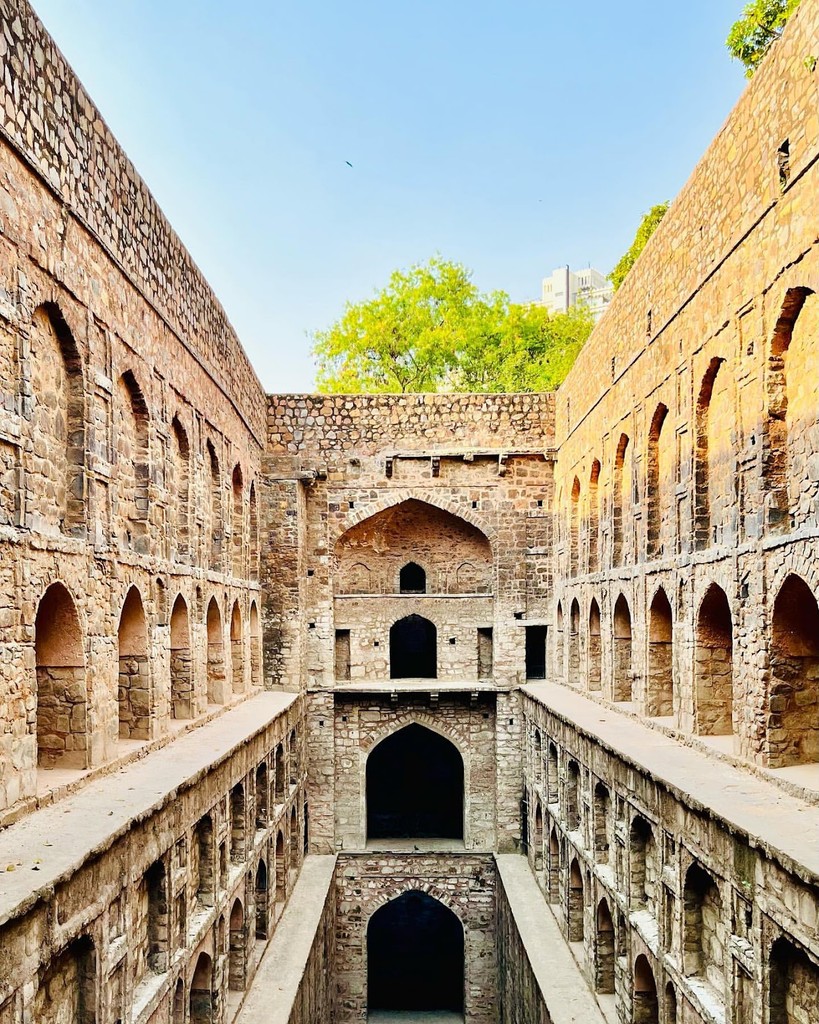
Agrasen ki Baoli (Source: Google Maps)
Agrasen ki Baoli is an ancient stepwell located in the heart of Delhi, offering a serene escape from the bustling city. Believed to have been built during the Mahabharata era, this historical site showcases unique Indo-Islamic architecture. The stepwell features a series of descending steps leading to a deep reservoir, originally designed to store water during the arid months. The structure is adorned with intricate carvings and arched niches, and its atmospheric ambiance attracts both history enthusiasts and photographers. Agrasen ki Baoli is not only a testament to Delhi's rich architectural heritage but also serves as a reminder of the city's historical water conservation techniques. Today, it stands as a popular tourist attraction, inviting visitors to explore its fascinating history and enjoy the tranquility it offers.
Connaught Place
Walk towards Connaught Place, a commercial and cultural hub with colonial-era architecture, where you can enjoy the vibrant atmosphere.
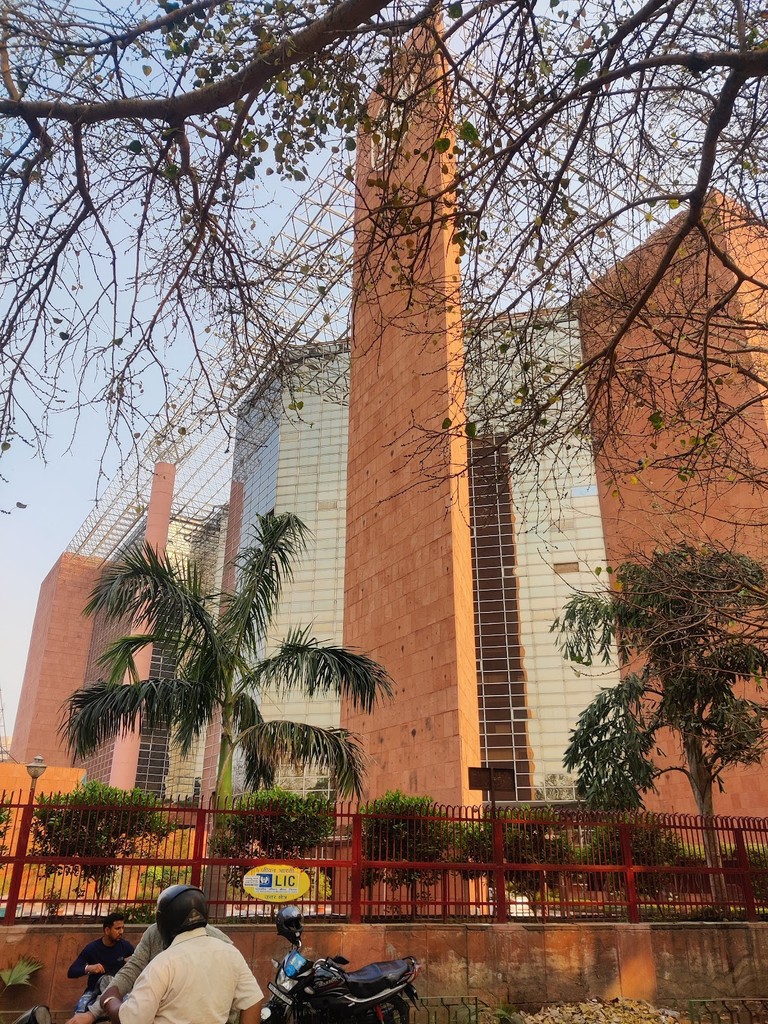
Connaught Place (Source: Google Maps)
Connaught Place, often referred to as CP, is a bustling commercial and cultural hub in New Delhi, known for its colonial-era architecture and vibrant atmosphere. Designed in a circular format, this area features a mix of shops, restaurants, and entertainment venues, making it a popular destination for locals and tourists alike. The iconic white colonnades and Georgian-style buildings add to its charm, while the central park offers a green respite amidst the urban landscape. Connaught Place is home to various cultural events and festivals, showcasing the rich diversity of Indian culture. The area is also a significant business district, housing numerous corporate offices. With its lively ambiance, CP is the perfect place to experience the essence of Delhi's modern lifestyle while appreciating its historical roots.
Jantar Mantar
Head to Jantar Mantar, an astronomical observatory built in the 18th century, featuring large instruments used to study the cosmos.
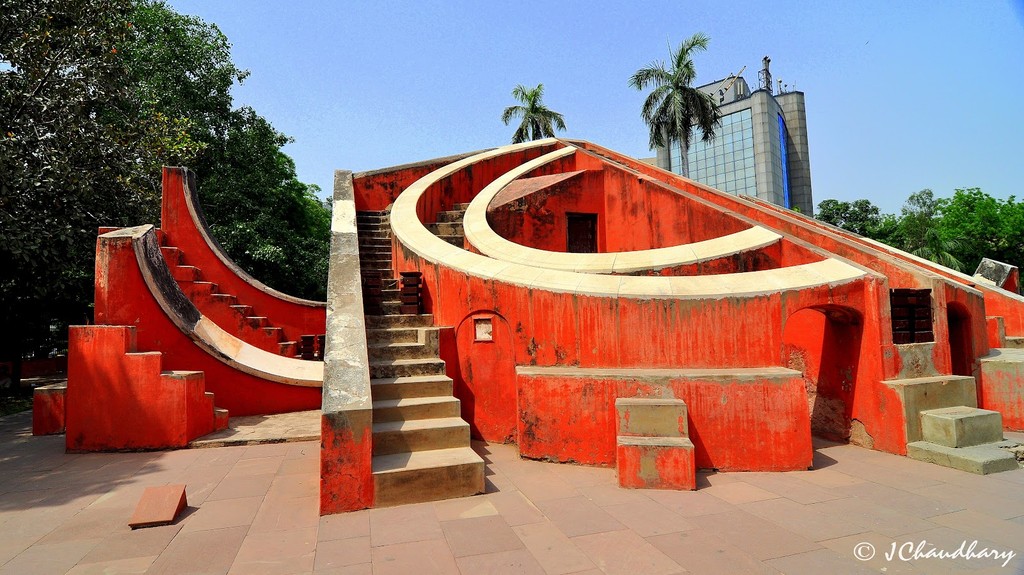
Jantar Mantar (Source: Google Maps)
Jantar Mantar is an astronomical observatory built in the 18th century, located in the heart of Delhi. Commissioned by Maharaja Jai Singh II of Jaipur, this remarkable site features a collection of architectural astronomical instruments used to study celestial bodies and measure time. The observatory is home to some of the largest instruments in the world, including the Samrat Yantra, a massive sundial that can accurately tell the time within seconds. Jantar Mantar reflects the scientific advancements of its time and showcases India's rich heritage in astronomy. The site is not only a place of historical significance but also attracts students and researchers interested in astronomy and mathematics. Visitors can explore the various instruments and learn about their functions, making it an educational experience that highlights India's contributions to science.
Gurudwara Bangla Sahib
Conclude your tour at Gurudwara Bangla Sahib, a significant Sikh temple known for its beautiful architecture and the serene Sarovar (pond).
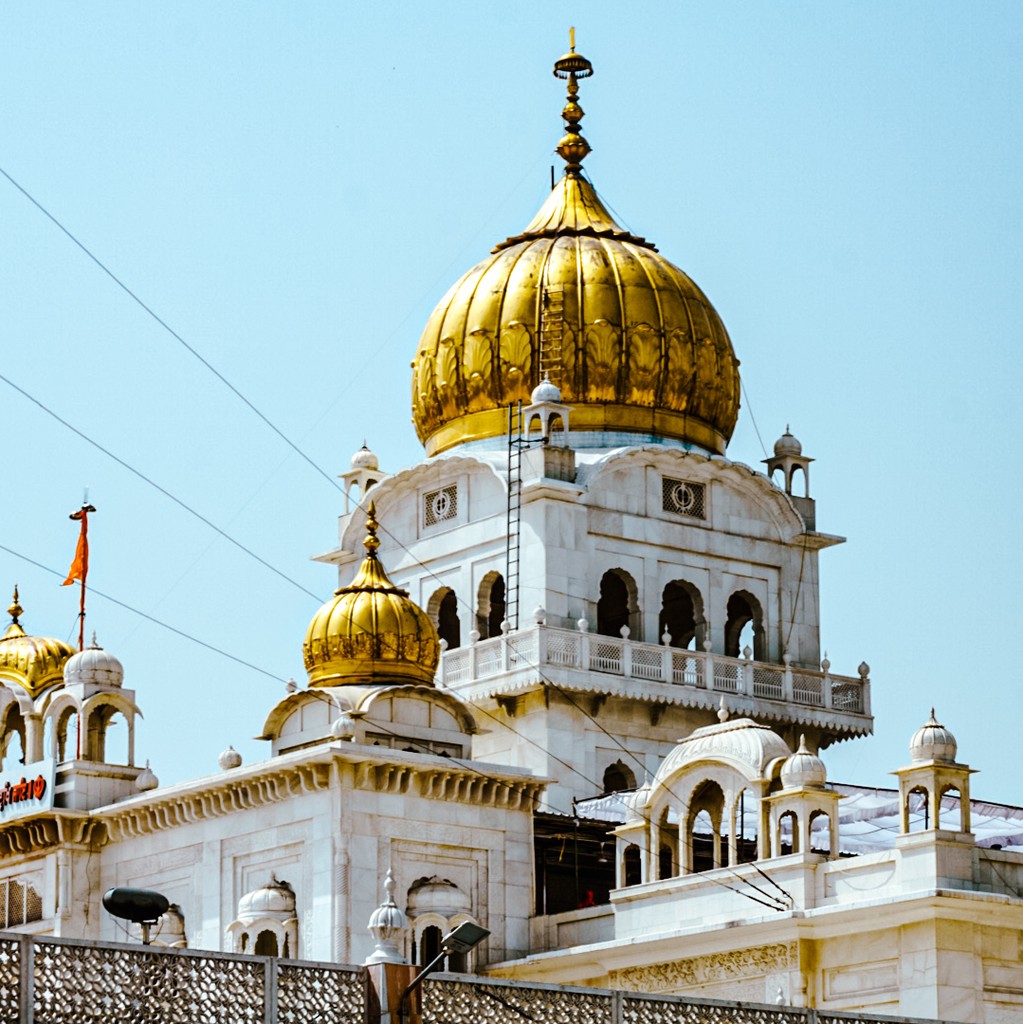
Gurudwara Bangla Sahib (Source: Google Maps)
Gurudwara Bangla Sahib is one of the most revered Sikh temples in Delhi, known for its stunning architecture and serene atmosphere. Originally the residence of the 8th Sikh Guru, Guru Har Krishan Ji, the gurudwara was transformed into a place of worship in the 20th century. The beautiful gold dome and white marble façade are striking features of the temple, attracting visitors from all walks of life. The complex includes a sacred pond, or Sarovar, where pilgrims come to take a holy dip, believed to cleanse the soul. The gurudwara also serves free meals (langar) to thousands of visitors daily, embodying the Sikh principle of selfless service. The spiritual ambiance, coupled with the harmonious coexistence of people from diverse backgrounds, makes Gurudwara Bangla Sahib a significant cultural and religious landmark in Delhi.

Your travels, your rules.
Create your own Free Walking Tours.
Set your preferences, distances and anything you want to do or see.
Completely free, no payment required.